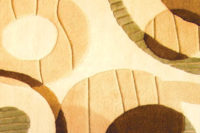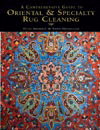Carpet by its very nature is soft, hence the reason it is referred to as a soft surface product by the industry. But for anyone who has been in the industry for the last decade or so knows the hand, or feel of carpet has been getting softer and softer. This trend is not expected to continue, as mill executives say it is not a trend, but a fact of life in that these new, ultra soft carpets are here to stay.
When it comes to soft carpet there are two main questions: How is the industry able to create such a product? And, why are these products being made in the first place?
Let’s start with the second question as it is not only the easier of the two to answer it also helps explain why this is not a trend but a mainstay. Put simply, consumers want it. In fact, Steve Griffith, chief marketing officer for Invista, maker of Stainmaster fibers, “remembers softness showing up in consumer research back in the mid 1990s. Consumers desired it then and 20 years later they continue to desire it.”
Jonathan Cohen, COO of Stanton Carpet, noted, “There is plenty of data that shows the traction and salability of soft products so it seems reasonable they will continue as the market evolves the concept.”
Randy Merritt, president of Shaw, added, “Customer response to softer products was so positive in 2013 we expect it to continue to expand and refine as we move in to 2014. Residentially almost every introduction over the past year has been ‘soft’ and that will likely continue this year.”
James Lesslie, executive to the chairman of Engineered Floors/Dream Weaver, pointed out the ultra soft products, which fall into the higher price range of carpets have gained consumer acceptance because they not only “like the softness appeal for their bedrooms, they are willing to spend more on it.” He feels some of this has to do with the rise of hard surfaces, which generally have a higher price tag than carpet. “So the sticker shock for an ultra soft carpet is not bad when compared to a high end hard surface. Carpet has always been a great value but people are now really able to see it when they compare the costs to other flooring.”
David Duncan, senior vice president of marketing at Mohawk, said just look at a typical specialty dealer’s showroom over the last few years to gauge the popularity of these new soft carpets. A handful of years ago the percentage of products offered that would fall into the new soft category was less than 10%. Now it is up to 70% in some stores.
And, generally speaking he noted back in the summer of 2012, “if a retailer is not selling premium soft then their showrooms will be absent of consumers within a year as we’re getting so much positive feedback from dealers saying they can’t keep the products on the shelf.”
Now, Duncan added, “with everyone getting into soft, we’re seeing less of the craze but the momentum is continuing in terms of this is the kind of product consumers want for their homes.”
What is Soft?
For many, the concept of soft carpet can be confusing because as Merritt said, “Softness is a quality included among the selling features of carpet for years whether it is called softness, warmth or comfort under foot. It is rare to see a consumer take off her shoes, step on a carpet, and say ‘Oh my, that does not feel good.’”
So, if carpet is already naturally soft how is the industry going about making it softer? The answer to this can be technical, but at the basic level it has to do with better technology. From the way fiber is extruded to the way yarns are twisted and heatset, among other factors, technology has played a key role in allowing manufactures to create carpets that are softer than ever before—to the point where some are actually as soft as bathmats, yet do not mat, crush and lay flat like their bathroom counterparts.
Whether it is nylon, polyester or triexta—the fiber used by Mohawk to make SmartStrand and SmartStrand Silk—it all comes down to the fiber’s denier, the smaller the denier per filament (DPF), the finer the yarn, which translates to more surface area being exposed, which allows for the natural softness of the product to come out even more.
As with beauty, though, soft is a relative term, meaning there is no industry standard or definition on what constitutes a soft carpet from a “non-soft” carpet.
But, there are some guidelines many mills follow when it comes to soft. Griffith noted in the 1990s, the average yarn was 18 DPF. In 2000, Stainmaster Tactesse was introduced as the first of the new soft yarns and came in 12 DPF.
Since then the DPF level has been getting smaller and smaller to where some products are now equal to those of bathmats, which are mostly 3 DPF.
Some mats are as low as 1 DPF, and Griffith said the technology is there to make broadloom that soft but because of performance issues, “we think carpet is reaching its point of softness—at least as far as we are concerned in terms of being able to attach the Stainmaster name to it.”
Merritt agreed, noting, “We’d never say never, but it seems we are reaching a limit of how soft we can go for broadloom carpet that will perform in residential settings. Residential broadloom installations face more day-to-day traffic and wear and tear than a bath mat and they are expected to last longer.”
With such a range of DPFs now being incorporated into carpets, the aspect of soft has actually taken on a new level, meaning there is soft and there is ultra soft. While it depends on who you are speaking with, and the type of fiber in question, there is a general agreement that anything over 12 DPF would be considered your normal, good old fashioned carpet. Fibers that fall between 9 DPF and 12 DPF are considered to be soft, and anything 8 DPF or below is thought to be in the premium or ultra soft category.
Duncan explained, as the industry develops these finer yarns, “we are able to have more filaments per strand but without giving up on performance—that’s where innovations comes in. “When soft fibers were first introduced in 2000 they included 72 elements to make the yarn. With our latest Wear-Dated Embrace we’re getting up to 225 filaments per strand, and with Silk it is up to 300.”
He described it like a cable on a bridge. “A single strand is easy to break, but the more strands wrapped together the more durable and resilient the product becomes.”
Durability Issue
Performance is a big issue and mills are fully aware of this. Karel Vercryussen, CEO of Beaulieu America, said, “We believe there is a balance. On the one hand, consumers like the soft hand or feel of an ultra-soft carpet, but on the other hand, they have to live with it—meaning they have to walk on it without excessive tracking and they have to vacuum it without excessive effort.”
Lesslie said all mills use industry acknowledged testing criteria but some, such as Engineered Floors go the extra “step” by actually paying people to walk on their carpets. “We don’t test them in machines but instead put them through a real-life workout.”
Recognizing the potential trade-off between soft hand feel and in-home performance is important, Vercryussen added, “We have invested a great deal of time, effort and money to engineer our softer products to maximize performance. We believe it is important not to sacrifice the industry in the long-term for the short-term.”
Cohen said, “I can’t speak for the yesteryear but our soft carpets are well made, look fantastic and rate very well for their intended use. It’s natural for us to push the limit on all newer innovations, our Shaggy Posh meets that bathmat like softness, providing tremendous comfort underfoot, high style and great wearability. Our products are well-made, high style and tested but the reality is for anyproduct, not just soft, it’s incumbent throughout the selling channels to manage expectations.”
Maintaining these new, ultra soft carpets has become a talking point within the industry as there have been reports of consumers having issues when it comes to using certain vacuums or the carpets, especially the plusher, heavier face weight products.
“We have heard this concern,” said Vercryussen, “and it may or may not be accurate for some of our competitors’ products. We have worked hard to provide a soft product that can be vacuumed. In fact, at last year’s Surfaces, we demonstrated the difference in vacuuming of our soft carpet versus the competition.”
Merritt explained, “The new softest carpets are like a fine article of clothing. They take a little bit of special care to make sure they are maintained properly. When you buy an expensive silk blouse, you know it will require more care than a [cheap] look alike. Soft carpet has the luxuriousness of a fine garment that requires continued investment in proper care. Consumers who are not willing to maintain the proper care for the softest carpets should consider another purchase. We are educating our retailers with in-store and online training, brochures they can share with consumers, and website specific information. Understanding this aspect of a flooring investment is important and should not be over looked.”
Lesslie said the company has tested all types of vacuums on its products, especially its Flagship PureSoft Cashmere line and “we have experienced no issues. We’re trying to be good industry stewards and our reps know this and are instructed to explain this to dealers.”
Other companies are offering recommendations via their websites and through in-store brochures as to which vacuums consumers should consider for certain carpets.
“We offer guidance on specific models that work best for soft carpet,” Merritt said. Consumers still have many options, such as more than two dozen models by a number of manufacturers that we recommend for our Caress line.”
Duncan said because of the initial issue with vacuums, which he said the industry has mostly rectified by offering recommended models for their carpets as well as trying to educate retailers and consumers with in-store literature and information on their respective websites, Mohawk reached out to the blogger community to educate them. “We wanted to take a pro-active approach to help those who have been exposed to the problem.”
He noted, “The nice thing about today’s products, not like the shags of yesteryear, if you have the proper tools to maintain them, they will not only last a long time, they will not get all ‘matty’ like the old shags.”
The final aspect of the soft revolution has to do with fiber type and is one better than the other for this type of product. Even here it is a matter of judgment and use as when it comes to today’s ultra soft carpets the average person could not tell what yarn system is being used.
“The fundamentals of each fiber type are still there,” Duncan explained, “so it is still extremely important for the retail salesperson to ensure the right product is being shown for the consumer’s lifestyle needs. We are in the home furnishings business, not just floor coverings, so what does the consumer need and want is just as important.”













.jpg?t=1690771780)

